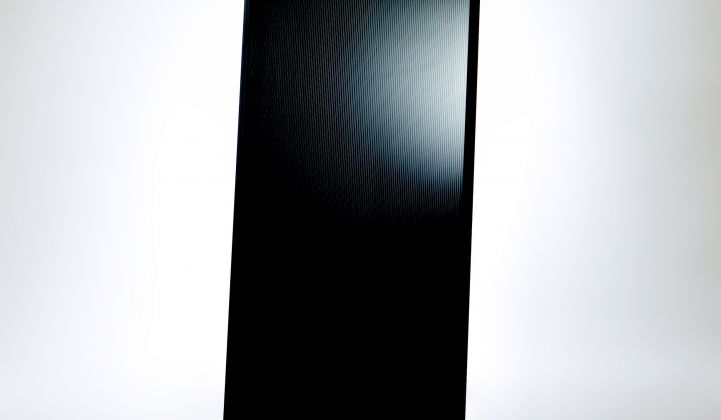The promise of copper indium gallium selenide (CIGS) thin-film solar has launched a score of CIGS thin-film solar startups and burned through several billion dollars of venture and corporate capital.
But only a few companies have managed to turn their CIGS IP and capital into a commercial-scale product that is shipping in real volume today. CIGS made up about 2 percent of cell production in 2010.
- Solar Frontier began research into CIGS thin-film solar in 1993, produced 46 megawatts in 2009 and 61 megawatts in 2010.
- Solyndra is on the way to 50 megawatts of production per quarter.
- And Q-Cells produced 75 megawatts CIGS PV last year with a factory capacity of 135 megawatts. (They are listed as Solibro, the Swedish group purchased by Q-Cells, in the table below.) The company boasts an aperture efficiency of 14.7 percent and an average module efficiency of 13 percent -- what the firm claims is the highest production efficiency of any thin film technology. Today marks the introduction of this technology to the North American market.
MiaSolé seems to have made some strides in getting to megawatt scale shipments -- note their deal with Solar City and Wal-Mart. And then there's the long list of other CIGS players including Stion, Wurth Solar, NuvoSun, Soltecture (formerly SulfurCell), the supposedly soon-to-be-sold HelioVolt, SoloPower, AQT, Nanosolar, and ISET. I am sure I missed a few. That list contains a mix of firms with varying degrees of credibility and bankability.
Data from Greentech Media Research
Q-Cells, founded in 1999, has a product line ranging from solar cells, crystalline and thin film solar modules to turnkey photovoltaic systems. I spoke with Marc van Gerven, Managing Director of Q-Cells North America, about the firm's CIGS product.
Q-Cells has already deployed their CIGS modules outside of North America, in both commercial and residential installations, including a 3.4-megawatt commercial rooftop in Tontarelli, Italy.
As mentioned, the average Q-Cells CIGS module efficiency is 13 percent and van Gerven stressed that the number is "off the production line and dead-center average." The CIGS panels are destined for commercial and residential rooftops in areas with low or diffuse light conditions.
Crystalline silicon panels will continue to be deployed in turn-key utility applications by Q-Cells so as not to cannibalize their own business.
Van Gerven saw this as evidence that the standard one-size-fits-all solar era is coming to an end. He said, "We are seeing application-specific and customer-specific solar products," with different panels required for installations in New York or Arizona or Ontario.
The issue of the "bankability" of CIGS panels becomes less significant when dealing with a major firm like Q-Cells that offers a 25-year warranty.
Van Gerven notes that their CIGS panels see zero degradation in the first few years -- in fact, their panels actually show an initial improvement in output. The panels boast a linear degradation of not more than 0.7 percent per year thereafter, maintaining 85 percent of rated output power after 25 years.
Perhaps that meager 2 percent CIGS number will start to improve over the next few years with help from the new, bankable CIGS players.



